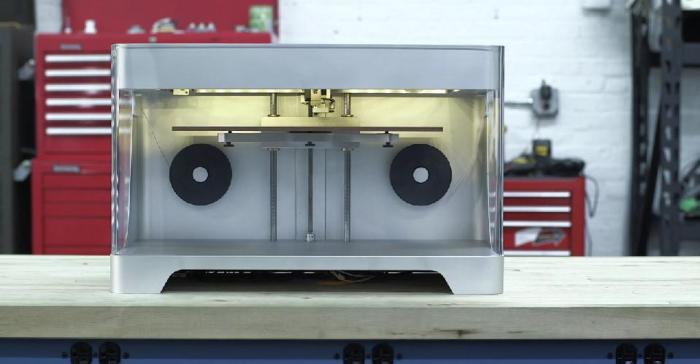Manufacturer Mark Forg3D publicly demonstrated the first 3D printer that uses carbon fibre, a material that is delivered by the nozzle like the plastic used in other printers.
3D printing is expanding to include more and more materials, machines are becoming more versatile and, although they are still the most popular, ABS and PLA plastics are no longer the only base for home 3D printing. But its still surprising to see just how far this technology can go when a new announcement throws open the doors to innovation even wider. In this case, the news is the first 3D printer capable of printing with carbon fibre, which is a strong, lightweight material that is used to build everything from rocket parts to Formula 1 race cars.
Carbon fibre joins other non-plastic materials that can now be used by 3D printers. Wood, nylon and paper are other alternatives that make it possible to fabricate objects with other characteristics, aimed more at decoration or specific objectives. Even cement has firmly established itself as a material for these machines, and the company Contour Crafting is actually using a concrete-like mass to print houses in 3D, which, they say, can be constructed in less than a day.
Along these same lines, manufacturer Mark Forg3D announced its 3D carbon fibre printer, the Mark One, at Solidworks World 2014 in San Diego. According to the company, the objects that can be created by the printer can be up to 20 times stiffer (withstanding stresses without warping) and five times stronger (resistance to breaking or deterioration) than those made with ABS plastic.
The Mark One can also use other materials, such as nylon filament or low-cost PLA plastic, as the company calls it. But it is carbon fibre that makes this 3D printer unique. It can be used to create objects that are very strong and lightweight, and has been developed specifically with the aerospace industry in mind. The machine will be available starting in March, to pre-order units with a price tag of 5,000 dollars.
Carbon fibre has properties that are similar to steel, but its weight is closer to that of wood or plastic, and it is also a very good thermal conductor, so it is used as an insulator. In addition to the aerospace industry, it is also used in vehicles and in the sports industry, where weight and strength are important characteristics.
http://vimeo.com/84989258









